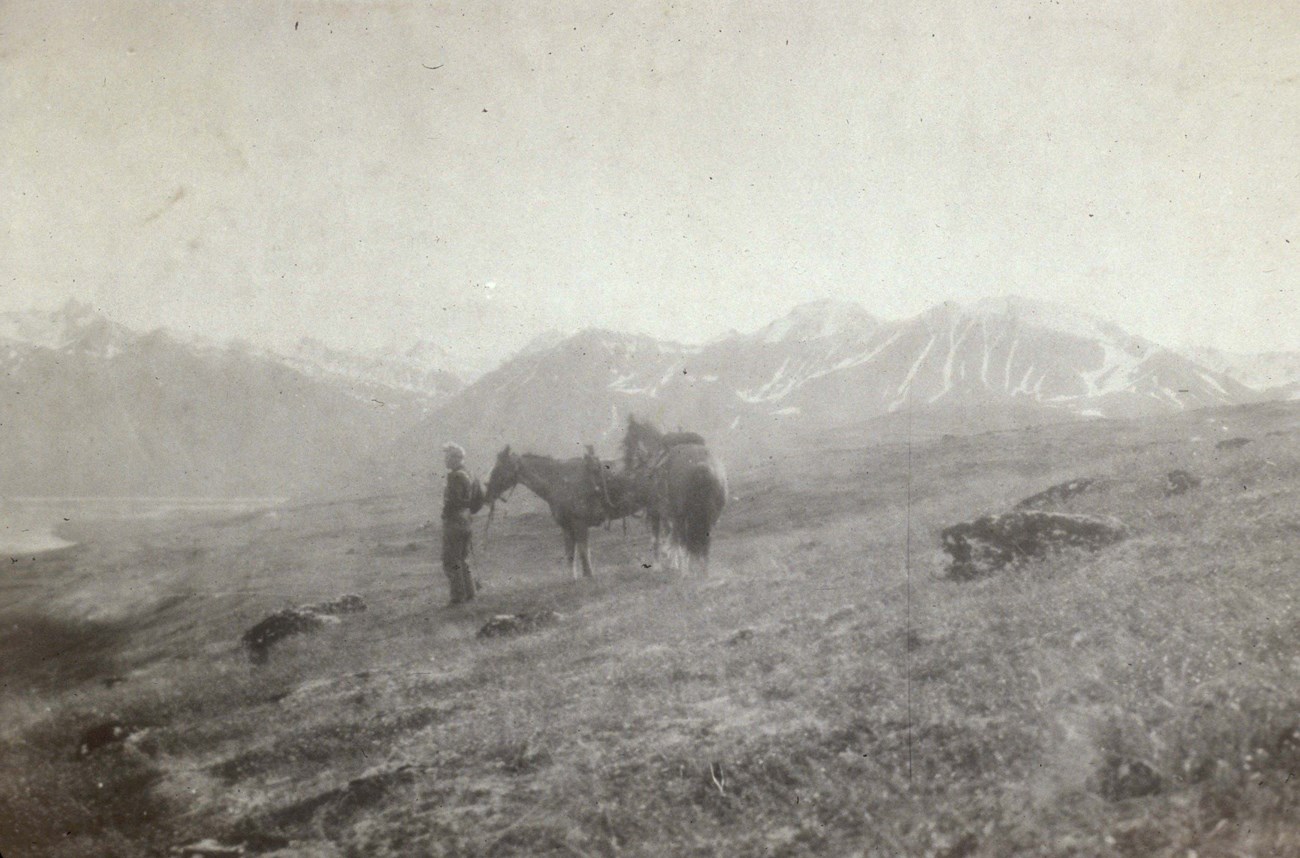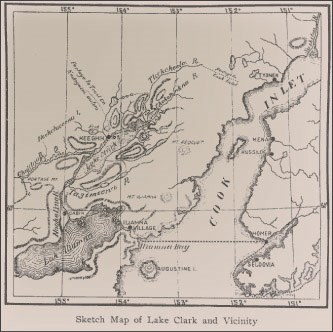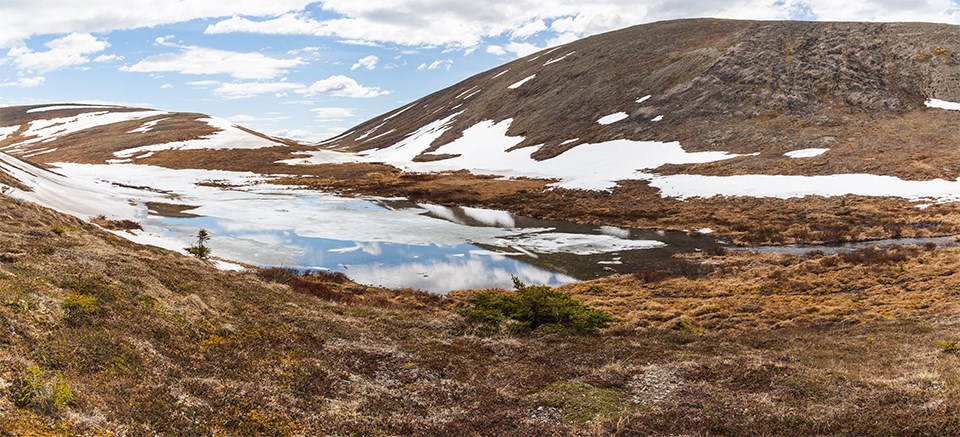
USGS photo, SR Capps Collection A Link in a Longer ChainThe Telaquana Trail is a historic Dena'ina Athabascan route from Telaquana Lake to Qizhjeh (Kijik Village) on Qizhjeh Vena (Lake Clark) that served as both a transportation corridor and was an important subsistence area. Crossing the headwaters of three of Alaska’s richest river drainages; the Kuskokwim, the Nushugak, and the Kvichak Rivers, the ancestral Telaquana Trail is likely one portion of a longer route that connected the people of Cook Inlet with the people of the Kuskokwim and Yukon rivers of Interior Alaska.The Lake Clark Dena’ina were important for the trade network which moved marine products and trade goods into the heart of the Alaska range. The people who lived at Qizhjeh, a Dena’ina settlement that was once one of Alaska's largest village sites, and Telaquana used Lake Clark Pass or Telaquana Pass to journey to Cook Inlet for hunting and visiting. The story of the Lake Clark Dena’ina and their use of the Telaquana Trail from the early 19th and 20th century comes from a rich oral history told by people who walked the trail with their families as children and remember stories told to them about their ancestors who used it. The Dena’ina were remarkable hikers. Oral histories tell of one man, Trefon Balluta, who lived at Telaquana and could hike the trail in one day. When his cache of tea and sugar was getting low he walked from Telaquana to Qizhjeh in one day and returned to Telaquana the next. Women and children also walked the trail, camping along the way to pick berries and trap ground squirrels in the late summer. With the squirrel fur they made warm winter undergarments and linings for parkas. 
Telaquana Trail is labeled "Portage to Trail Creek-Kuskokwim Waters." A Biological Reconnaissance of the Base of the Alaska Peninsula by Wilfred Osgood, Washington, D.C., Government Printing Office, 1904 The Beginning of a New EraMiners, trappers and explorers occasionally used the trail throughout the 1800s and early 1900s. Life changed for the Dena’ina in the late 18th century with Russian contact. Fur trading became an important means for the Dena’ina to acquire kettles, steel axes, tea and trade beads. After the U.S. purchase of Alaska in 1867 the Dena’ina traded with the Euroamerican traders. 
NPS Photo/T.Vaughn Sharing StoriesIn recent years there has been a renewal of interest in the rich cultural history of the Telaquana Trail. Dena'ina elders have shared traditional names for features along the route with the Place Names Project, a cooperative effort between Lake Clark National Park and Preserve and the State of Alaska Department of Fish and Game Division of Subsistence. The University of Alaska Fairbanks' Project Jukebox has recorded elders describing the trail.Opportunity to ExploreBackpacking the Telaquana Route |
Last updated: October 30, 2024
